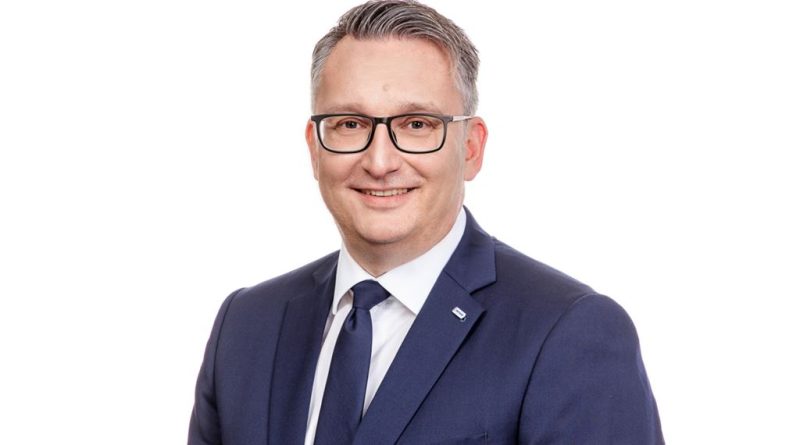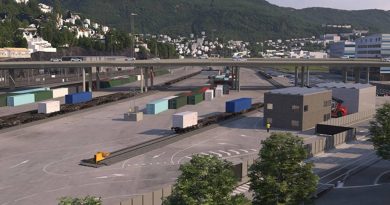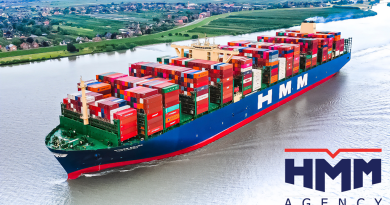Peter Kiss, CEO of METRANS Group – We are intensively developing the Indjija terminal, and we want daily connections
There is no future for combined transport without powerful terminals, the CEO of METRANS Group, Peter Kiss, said in an exclusive interview for PlutonLogistics.
The railway subsidiary Hamburger Hafen und Logistik AG (HHLA) incorporated an intermodal terminal in Indjija into its network a year ago, following an acquisition of the regional brand Adria Rail. Thus, the strong expansion of the METRANS Group in Southeast Europe was launched, and as of a few weeks ago, the group has become the full owner of Adria Rail.
– I think this step only proves what we have been discussing before as well – that the Serbian market has a huge potential and that our plan is to grow together – Kiss emphasized for PlutonLogistics.
PL: How would you describe the first year of operation of the terminal in Indjija under the management of METRANS?
– So far, we can confirm that everything is running as planned. To take over a terminal that already had its “habits” and customary procedures is certainly a challenge, but nothing unmanageable. Even at this moment, our team from the terminal in Dunajská Streda is present in Indjija, providing support to our colleagues there.
At the beginning of February, we made the biggest step so far, in the form of fully implementing the METRANS informational system. No beginning is easy, but we see really good progress and improvements are visible on a daily basis. I’m confident when I say that terminal Indjija will in no time become a full-fledged member of METRANS terminals, providing the same level of service as any other terminal in our network.
PL: What routes do you manage from this hub, how many trains and connections do you operate?
– As for the trains, we are currently operating 3 roundtrips per week between the port of Rijeka and the Indjija terminal, and their utilization is very good. While on the one hand, we are focusing on sales activities in Serbia, on the other one, we are preparing for the increase in the number of departures.
The long-term goal, of course, is to have a daily connection. With METRANS equipment in terms of wagons and locomotives, we are prepared.
Aside from the Rijeka connection, we are also operating a connection between the METRANS terminal Budapest and Indjija. Our Budapest terminal serves as a hub point for concentrating cargo from all the other ports where we are active, including the ports of Hamburg, Bremerhaven, Wilhelmshaven, Koper, etc. But let´s not forget about Malaszewicze, the hub for our New Silk Road service, from where direct train to Indjija has already been successfully tested. And of course, our other continental – intra–Europe connections.
PL: Now that it is fully integrated into the METRANS network, what are the future plans for Indjija? In what direction will the development move?
– On one side we continue to polish what we have achieved in terms of operations and processes. And on the other side, we have recently started with the terminal expansion. The current size and equipment of the terminal are of course sufficient for the time being, but as I mentioned previously, our goal is to grow.

PL: During our previous conversation in mid-2023, you emphasized that METRANS sees a huge potential not only in Serbia but in the entire region of Southeast Europe. What are the most important achievements in this region in 2023, and what are the plans for this year?
– The most important achievement is the progress we´ve made. You cannot build a castle from sand; history has proven this over and over again. First, we have to create a foundation that will last. The world of logistics has been confronted with many obstacles for the past years, and our goal is to build up a service that will withstand such obstacles. Once you have a foundation, you can start building. We see a very positive development, and that gives us the confidence to continue our work.
Last but not least, we are happy and proud to announce that Adria Rail has now become 100% part of METRANS Group. I think this step only proves what we have been discussing before as well, that the Serbian market has a huge potential and that our plan is to grow together.
We see the future in Serbia. We are also in the process of obtaining a “railway license”. Already today the METRANS rail cars, and also locomotives, are used in cooperation with our good partners to provide railway connections to and from Serbia, but also within and through Serbia.
PL: Where do future acquisitions fit into this? Are you negotiating the acquisition of other companies?
– Of course, we have strengthened the commercial, sales, but also operational activities with the support of other METRANS colleagues coming from various countries with various experiences. Building up a successful commercial partnership takes time, we have to familiarize ourselves with the Serbian market, just like our customers are getting familiar with the way we operate. So far, we can state a positive trend, new partnerships have been formed and we are happy to grow together with our customers. And we hope to present further plans soon.
PL: What is the situation like when we look at the big picture? What marked the operation of METRANS in 2023, globally speaking? Are you satisfied with the achieved results and what were you particularly focused on?
– We don’t need to spend too long talking about the challenging conditions in 2023. Last year was not easy, the post-pandemic situation combined with the Ukraine crisis led to an explosion in energy costs, which has significantly altered the transportation landscape. The second and also very important fact is the global economic environment, which was supposed to improve in 2023, but unfortunately did not.
Overall, if we look at last year’s results, we should be satisfied – we have kept our market position and our volumes.
But in detail, there are many changes that, we believe so, are less visible from the outside but are very significant for our future development. As they say – “everything is related to everything.” Following this philosophy, we launched a program of successive refurbishment of our terminals, these measures start with new terminal surfaces, additional cranes, and handling machines and end with new IT tools.
Why this has to be mentioned as a big achievement? Because there is no future for combined transport without powerful terminals. We believe that increasing the current flexibility and enlarging the terminal network is a crucial task.
METRANS is known as a specialist in intermodal transport of containers to/from seaports, but seaborne cargo is only a part of our activities. Our growing terminal network also opens many opportunities for intra-Europe transport, which is a very important point and a milestone on a long way to carbon-neutral transport on the continent.
PL: Although you practically answered the next question, let’s summarize it. Do you expect the factors we mentioned, such as energy and fuel prices, or inflation to continue to impact your industry’s operations in 2024?
– The fourth quarter of 2023, and the final volumes of the main European ports, clearly showed the direction for the outlook for 2024, and the first month of 2024 has confirmed this development.
It is no secret that the transportation industry is not a manufacturing sector, transportation is a service sector, we can only move the existing cargo and if the volume decreases, it is not a good sign for us. Apparently, almost all European countries have overcome the CPI peaks but the question is with what consequences.
Was our transport sector able to project the CPI in the selling prices? Which part of the CPI and growing costs remained in our sector without remuneration? Our sector works traditionally with low profit margins, which is why further reduction can only lead to an unhealthy development, and postponed or lower investments, which are needed to ensure ongoing improvement.
The energy costs still remain to be an issue, I believe that no one can predict further development. Here as well, the peaks and troubled times are behind us. Also, we currently see an unquiet political situation in the Red Sea region that directly affects the shipping industry and influences energy costs worldwide.
PL: Are the large railway infrastructure projects throughout Europe part of this complicated equation? How big of an impact do they have on the work of METRANS?
– The topic of railway infrastructure remains a never-ending story. There are many plans and projects on how to improve the situation, and how to remove current bottlenecks. METRANS acts internationally, we cross many borders and we see in some regions that planned projects are stopped or restricted before they actually started. We see ourselves as ambassadors of intermodal transport, our focus is to bring more cargo on rail. For that reason, we do not only acquire customers, but we also negotiate with all public authorities that participate in the planning and approval process, we explain what must be done from the practical point of view. And we believe that we have a lot of experience.
PL: One of the most current issues in the rail freight industry is undoubtedly the Digital Automatic Coupling. What are your thoughts regarding the future of DAC and its potential for rail safety improvement, but also for bringing some economic benefits? Also, in your opinion, how should the DAC introduction be financed?
– The targeted and described goal is to increase interoperability and eliminate dangerous and heavy work for railroad workers. In principle, nobody can have anything against this. But let’s go into more detail. DAC is a synonym for “coupling”, what about decoupling, are we really removing this type of job? There are different types of rail transport, and I dare say that a large portion of transportation is carried out on block trains, i.e. no coupling/uncoupling is necessary, or let’s say you only have to connect the traction locomotive.
The DAC could, of course, improve the situation for single wagonload transport. However, we are talking about a regulation that should be implemented in all European countries, but each country has a very different share of such traffic. Again, we need to talk about the costs that will be required for implementation and whether there is a time horizon in which this investment will pay off. In short, the costs will affect everyone, while only some of the market participants would benefit from this.
We can also think about the consequences together. The classic connecting hook is a piece of metal, easy to operate and control. With the “digital”, it will no longer be so simple, as a hard-working part is combined with fine electronics.
It is feasible, but no longer so simple. And of course, you will need well-trained technicians for maintenance and repair, and then we are back to the costs. These costs will be by no means low and will have to be reflected in our prices. The question is whether the market will accept this or whether we will worsen the conditions for rail transport again.
In general, DAC is a solution for the future, but a step-by-step implementation where it makes sense, and where it could be a real help, would be the right way forward in my opinion.
The regulations coming from outside and the costs involved, whether ETCS or DAC, are well-intentioned, but it is too much of a “good thing” at once. If only individual railway undertakings are to bear the financing, then it will be problematic or will not improve their market situation. But then the EU’s goals for CO2-neutral transportation will also be in danger because they cannot be achieved without rail transport. There is a lot of talk about quality and the need for a green transport transition, but unfortunately much less is done in reality.
M.Milosavljevic






